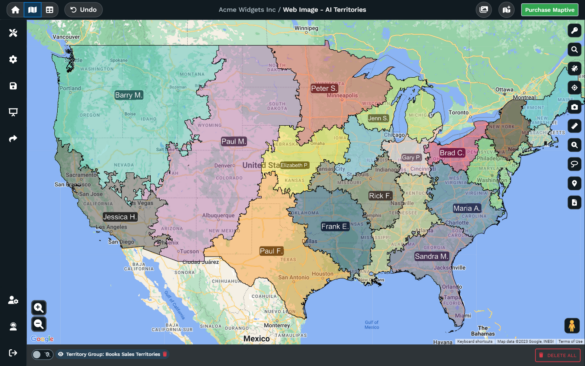
Sales territory mapping is the secret weapon that empowers businesses to conquer new frontiers and maximize their sales potential. Picture a strategic puzzle, where a geographic area transforms into a treasure map, leading to new leads, untapped opportunities, and exponential growth–the ultimate tool for a sales leader.
In this article, we’re handing you the ultimate arsenal of 10 battle-tested sales territory mapping tips. From creating laser-focused regions to empowering your sales dream team, we’ll reveal the blueprint for generating results that will leave your competitors in the dust.
Get ready to revolutionize your sales and marketing game, as we unlock the secrets to crafting efficient and effective sales territory management maps that will skyrocket your success.
Table of Contents
The first step in effective sales territory mapping is to define your objectives.
What do you hope to achieve by creating these sales territories? Are you trying to increase sales, improve customer service, or something else?
Once you know your objectives, you can start to develop a plan for how to achieve them.
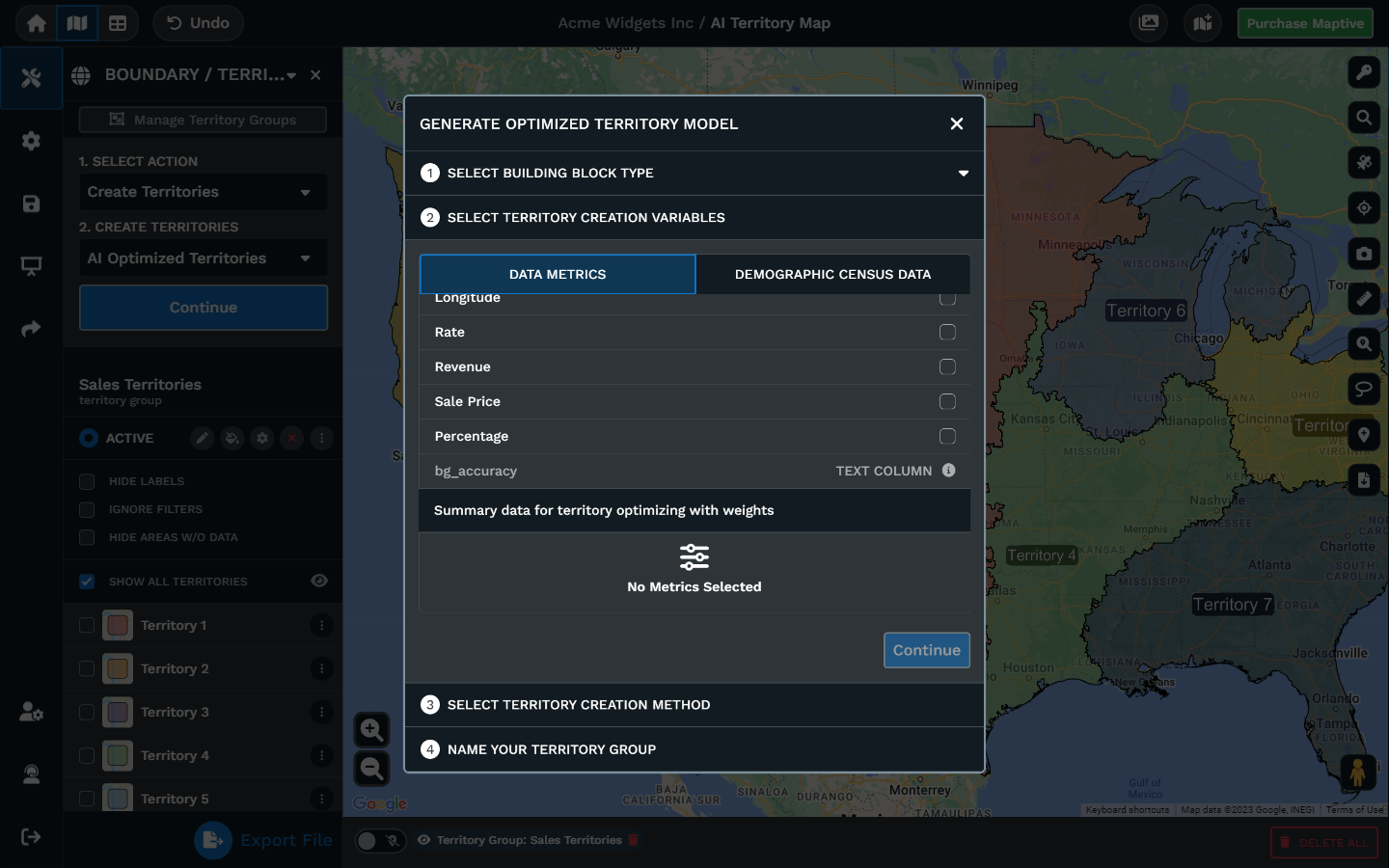 Image: Selecting Maptive Version 5 AI Territory Map Variables (Coming Mid 2024)
Image: Selecting Maptive Version 5 AI Territory Map Variables (Coming Mid 2024)
There are a number of different software tools that can be used for sales territory mapping.
Some of the most popular options include Maptive, SalesForce, and Insightly. When choosing a mapping tool, it is important to consider your specific needs and requirements.
Maptive stands out for its user-friendly interface that simplifies sales territory mapping, while its powerful data visualization capabilities allow seamless analysis of complex datasets. Real-time collaboration features foster teamwork, and cloud-based accessibility ensures data can be accessed anytime, anywhere.
When creating sales territory maps, it is important to consider geographic factors–such as distance, travel time, and physical barriers–that can have a significant impact on the efficiency of your sales teams.
For example, if you have a large sales territory with a lot of travel time, you may want to consider creating smaller territories so that members of your sales teams can reach clients more efficiently without spending the majority of their day just getting from place to place.
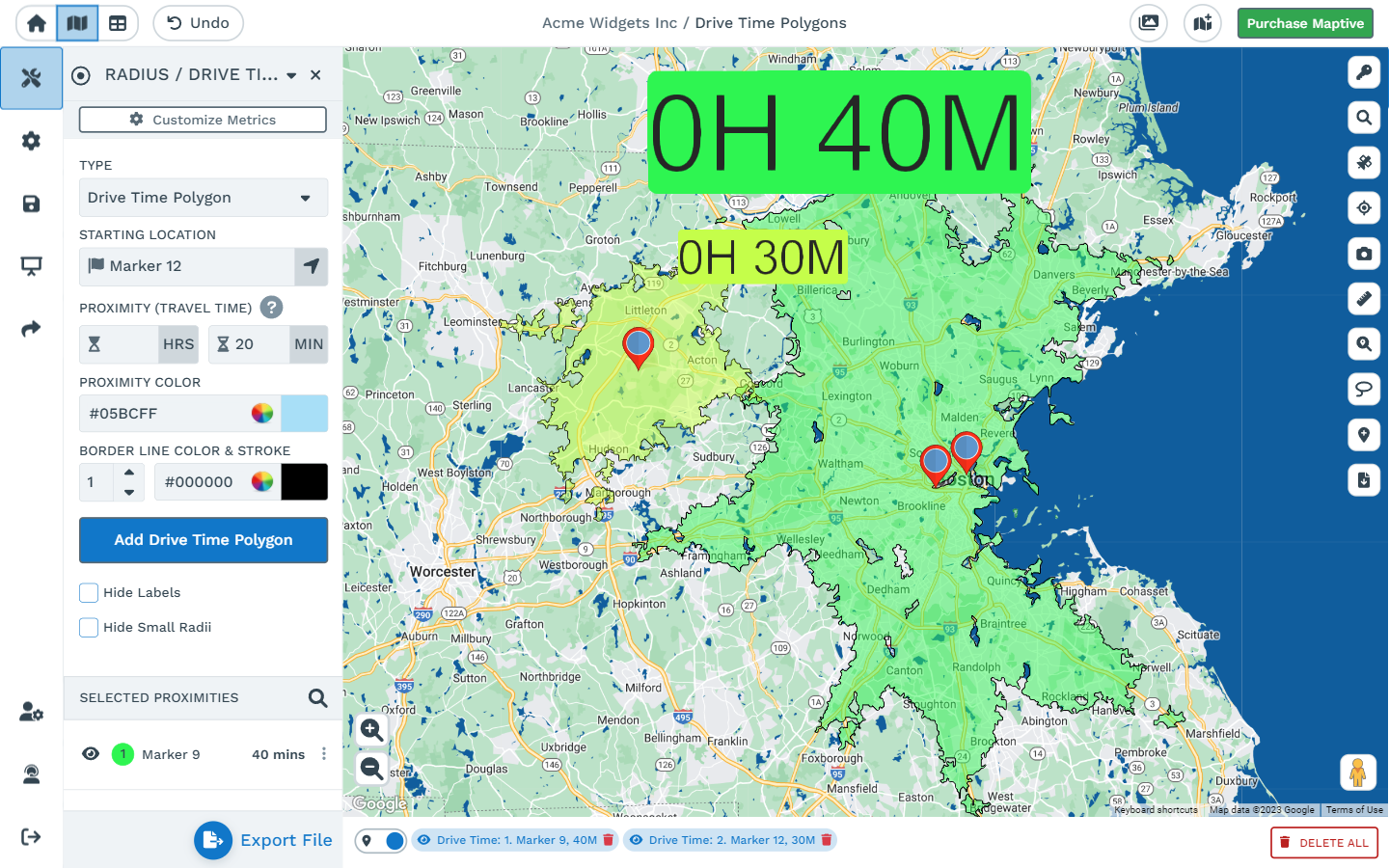
Image: Maptive Version 5 Drive Time Polygons (Coming Mid 2024)
A common challenge sales leaders face is striking a balance and making sure their sales teams get a fair share of the action.
It’s all about drawing and sorting those sales territories in a smart way. Consider the customer count in each area, the sales territory sizes, and the revenue potential they hold.
Once you’ve analyzed sales data and gone through the process of sales territory mapping, you can then assign reps to a specific sales territory and fine-tune your system to generate revenue. You can assign territories based on the strengths of your sales reps, their locations, and other factors that will optimize sales efficiency.
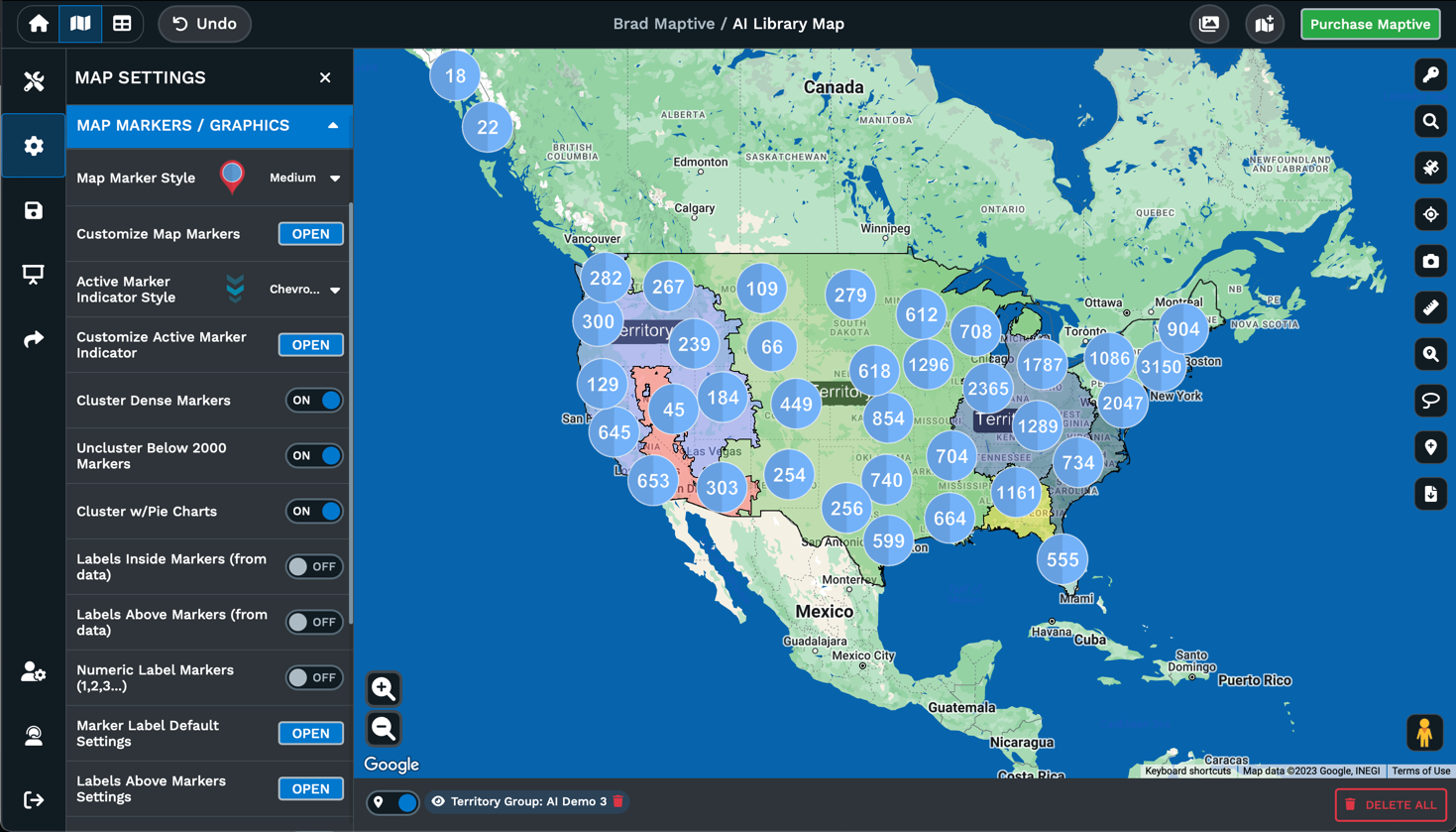
Image: Maptive Version 5 AI Territory Map (Coming Mid 2024)
Making smart use of demographic data can prove to be a valuable asset when creating effective sales territories.
Among other things, this data empowers sales leaders to pinpoint areas with a significant concentration of their target customers. For instance, if your product appeals to young professionals, strategically focusing your sales efforts in regions with a sizable number of those specific customer segments can help overall sales territory mapping performance.
This data can become an important part of your sales strategy to maximize your chances of success in reaching the right audience in their respective territories.
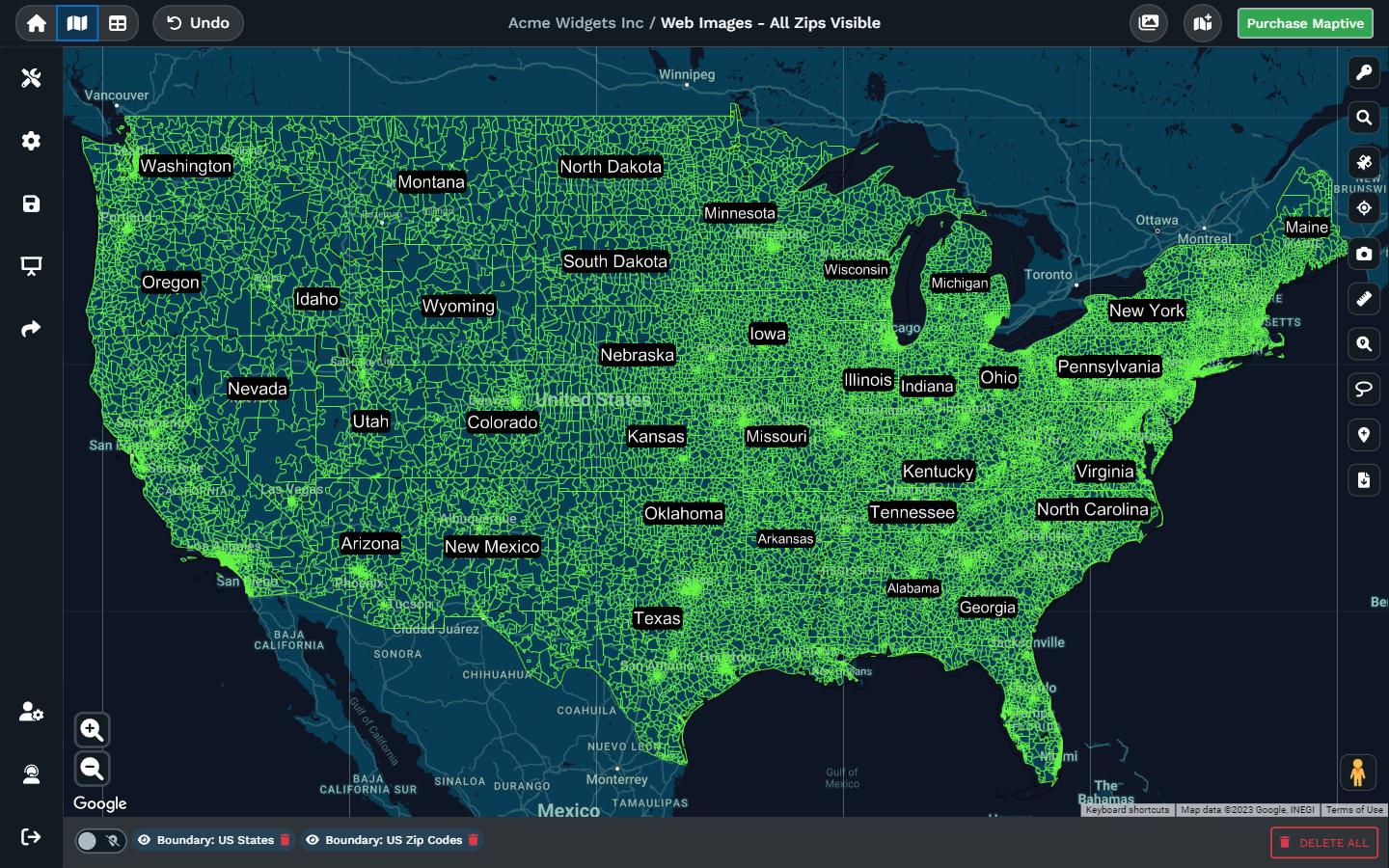
Image: Maptive Version 5 Zip Code Map Boundaries – Map your Data or included US Census Data within Zip Codes, States, Counties & more.
Your business and your target market are constantly changing, so it is important to regularly review and adjust your territories. This will ensure that your existing sales territories are still effective and efficient.
For example, let’s say your business expands its product line or enters a new market segment. In this case, reassessing and potentially realigning territories can help your sales teams better focus on new opportunities and target the right customers.
Additionally, market shifts, such as demographic changes or economic fluctuations, may alter customer preferences and buying behaviors. By staying vigilant and adjusting your sales territory mapping strategy, you can stay ahead of the game and maintain a competitive edge.
Keeping a finger on the pulse of your business and consistently fine-tuning your various sales processes and territories will undoubtedly lead to enhanced sales performance and overall success.
The people, aka your sales reps, who will be working with the sales territories should be involved in the mapping process as this will help ensure that your sales territory mapping plan is designed to meet the needs of the sales team members.
By gathering insights and input directly from the sales team, the territories can be structured to align with each salesperson’s strengths, preferences, and familiarity with certain areas. This involvement fosters a sense of ownership and accountability among the team, as they feel invested in the territories they helped create.
Another familiar scenario involves businesses introducing a new product line–in which case, including the sales team in the mapping process will mean they can share their expertise and understanding of customer preferences, which will lead to sales territories strategically designed to maximize the potential for selling the new products.
Ultimately, involving the team in the sales territory mapping process ensures that the new sales territories are thoughtfully crafted to cater to current customers and their needs and create a positive impact on sales performance.
In general, transforming your data into a map visualization can unlock valuable insights that may not be apparent when presented in tabular form. That process becomes so much more powerful when the information you’re mapping is your sales data that is now displayed neatly across sales territories.
However, the advantages of mapping your sales data don’t end there. This spatial representation of sales data brings clarity to patterns and trends, empowering you and your sales reps to make informed decisions and strategize effectively for maximizing revenue potential.
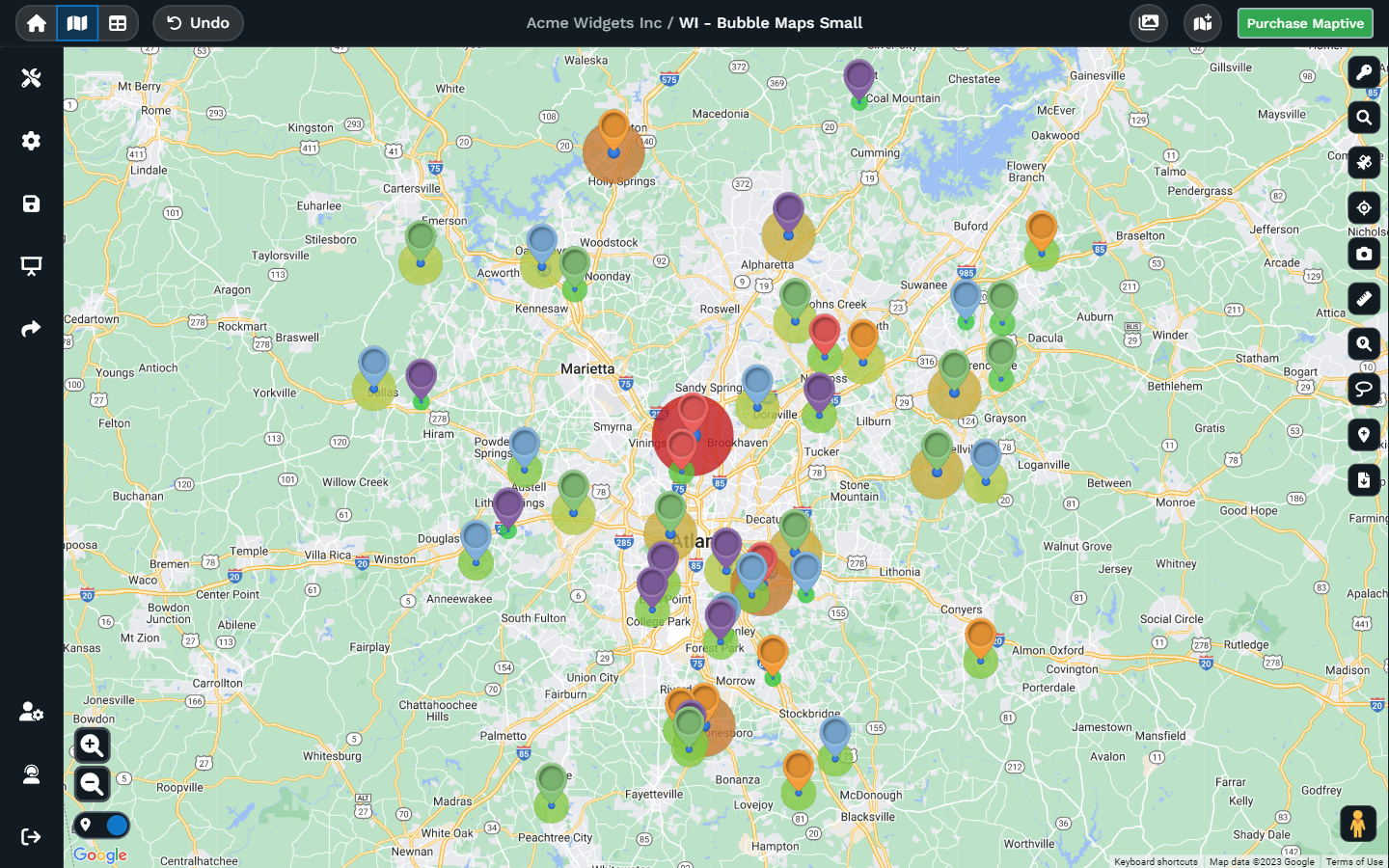
Image: Maptive Version 5 – Marker Grouping with Double Grouping (Bubble Size Representing Numeric Values)
A heat map is a data visualization technique used to display the density or intensity of data points on a map using color gradients.
Essentially, it is a graphical representation where areas with a higher concentration of data points are shown in warmer colors like red or orange, while areas with lower density are displayed in cooler colors like blue or green.
In the context of sales territory mapping, a heat map can be used to identify areas with higher sales performance, customer concentration, or other relevant metrics–which makes heat maps an invaluable tool for identifying high-performing hotspots and underperforming areas within your sales territories.
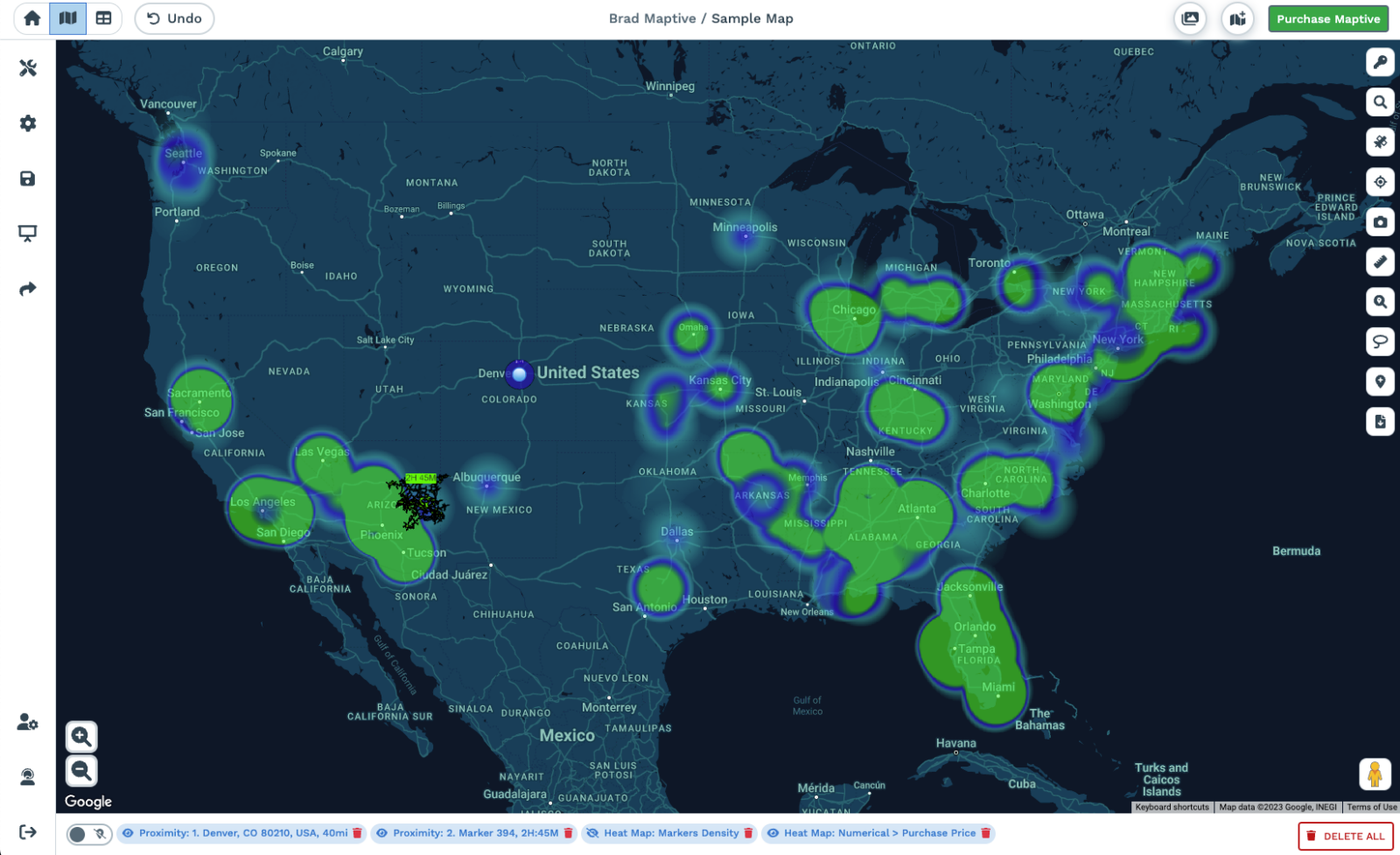
Image: Maptive Version 5 Heat Map (Coming Mid 2024)
Route planning is a game-changer when it comes to boosting the efficiency of your sales reps.
Route planning software can help you optimize your teams’ daily schedules, cut down on travel time, and allow more face-to-face interactions and less time stuck in traffic.
This is especially true if a sales rep needs to visit multiple clients in different areas during the day. With route planning, they can prioritize appointments based on geographic proximity, minimizing travel distances and ensuring a smoother, more productive day. This not only saves time and reduces fuel costs but also leaves ample room for the sales team to focus on building stronger customer relationships and closing deals.
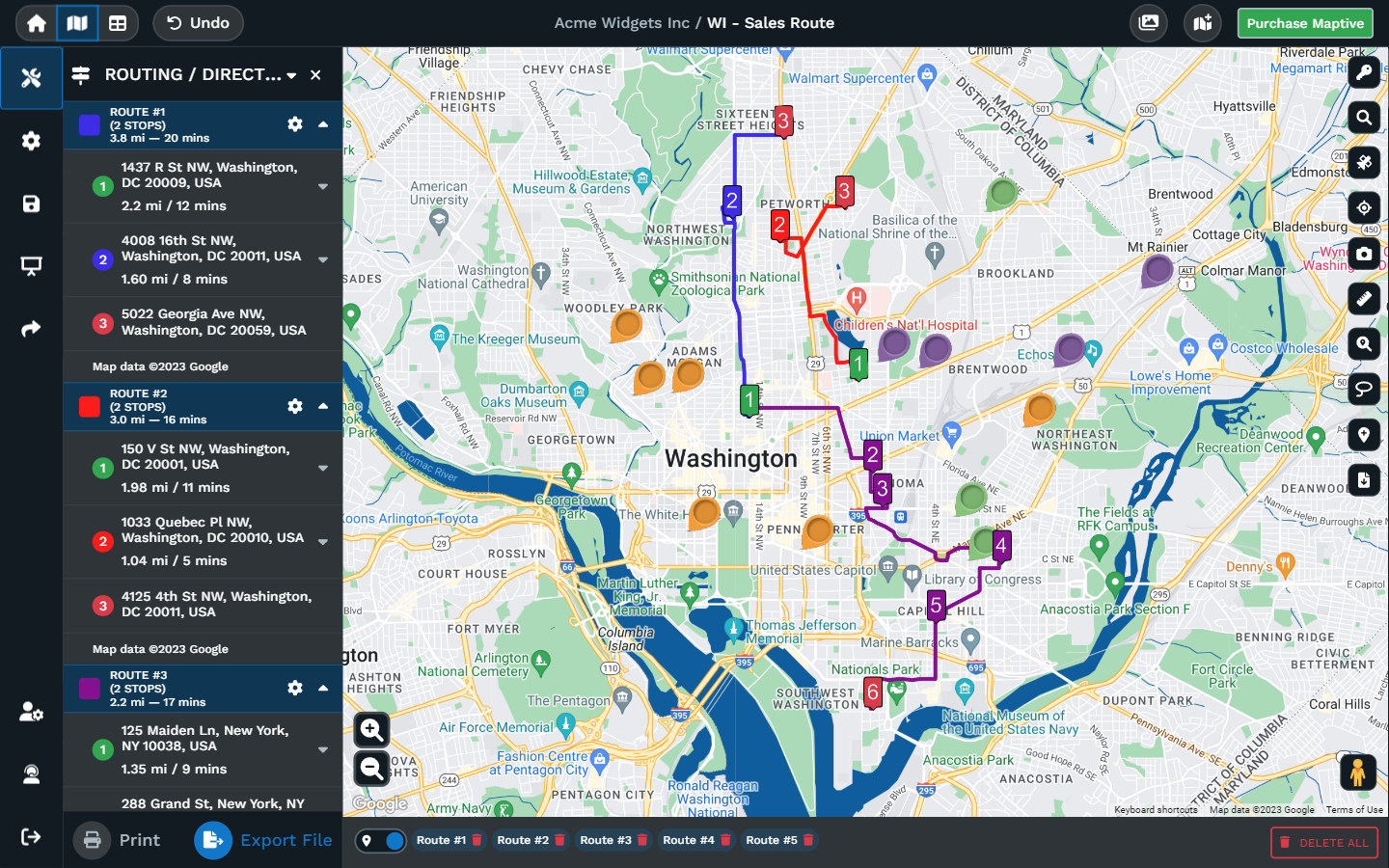
Image: Maptive Version 5 Sales Route Planning with Multiple Routes, Turn-by-Turn Instructions and Export Feature. (Coming Mid 2024)
In the ever-evolving world of business, crafting effective territory maps becomes a potent weapon to unleash the sales and marketing prowess of any sales leader.
Armed with the valuable tips from this article, you’re set to embark on a sales territory mapping adventure that’ll lead you to sales territory management greatness.
From smart data visualization to strategic route planning, these golden nuggets will help you carve out sales territories that are not only efficient but also exquisitely effective.
So, brace yourselves for sales triumphs as you chart the course to unparalleled success with your finely-tuned territory maps!
Sign up for a free trial of Maptive to start creating your own territory maps today!
Fred Metterhausen is a Chicago based computer programmer, and product owner of the current version of Maptive. He has over 15 years of experience developing mapping applications as a freelance developer, including 12 with Maptive. He has seen how thousands of companies have used mapping to optimize various aspects of their workflow.
